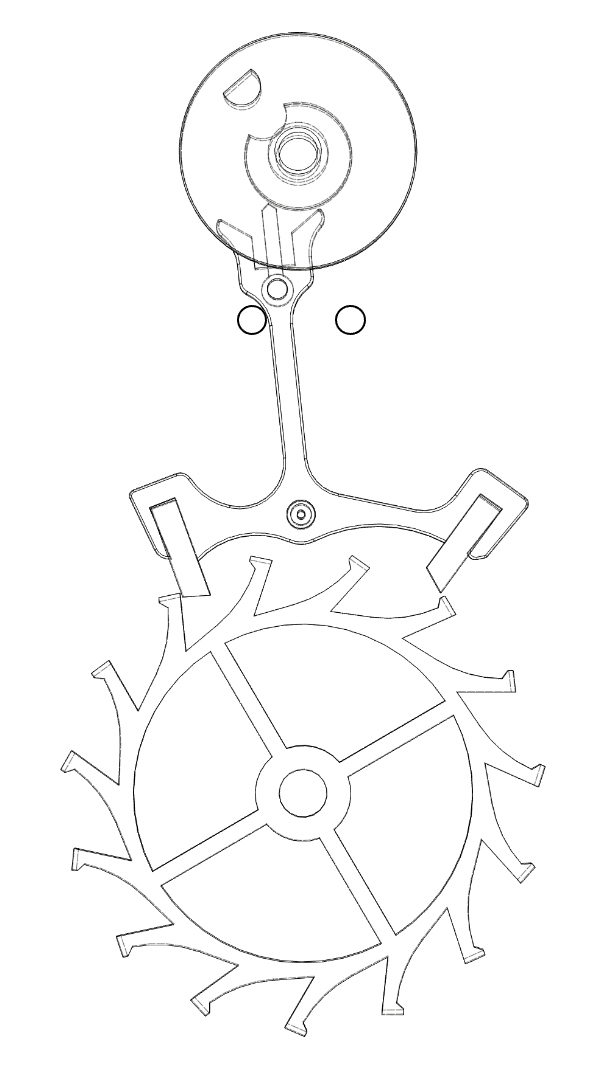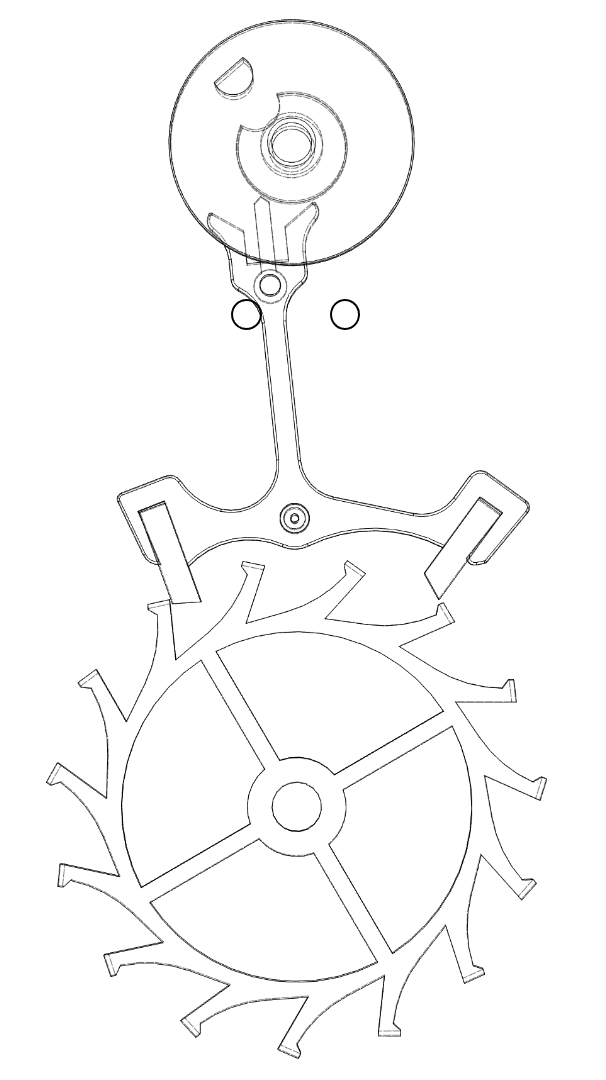SWISS LEVER ESCAPEMENT
Video: Dominique Büser talk about swiss lever escapement
Video: Dominique Büser talk about swiss lever escapement
The Swiss lever escapement is valued for its robustness, accuracy, and relative ease of manufacture. From the moment it appeared, this escapement quickly became the industry standard due to its technical merits and economic viability.
History
The Swiss lever escapement emerged in the second half of the 19th century as an improvement on the older, less efficient English lever escapement. Around 1842, Swiss watchmaker Georges-Auguste Leschot played a pivotal role in the industrialisation of this mechanism, enabling its widespread adoption. Over the decades, Swiss manufacturers refined the design, establishing it as a cornerstone of modern mechanical watchmaking.
Role of the escapement
The escapement has two main functions. First, it must keep the gear train at a standstill, releasing it only periodically and at regular intervals. Without the escapement, all the energy stored in the barrel would be discharged within a few seconds, causing the train to spin uncontrollably. The escapement therefore locks the energy of the train and allows it to “escape” intermittently, hence its name. (As shown in Figure 1, the escape wheel advances in small jumps but remains stopped most of the time.)
The escapement also maintains the oscillations of the regulating organ by imparting a regular impulse to it. As the regulating organ is an oscillator, the escapement’s secondary role is to transform a linear motion (the rotation of the going train) into an oscillatory motion (the oscillations of the balance and hairspring) (Figures 1 & 2).
Escapement Type
The Swiss lever escapement belongs to the family of detached escapements, which means there is no continuous contact between the escapement and the oscillator, allowing the balance wheel to swing freely between impulses.
Component Overview
The Swiss lever escapement comprises the following elements:
-
Escape Wheel: Typically made from steel, nickel-phosphorus (via UV-LIGA technology), or silicon (via DRIE micromachining).
-
Lever: Usually constructed from steel with synthetic ruby pallets, though entire levers may also be produced in nickel-phosphorus or silicon.
-
Impulse Pin Assembly (Double Roller): This consists of a large and a small roller, joined by a staff. It is generally made from ductile materials capable of withstanding impact (such as brass or CuBe alloys). Silicon is unsuitable for this purpose due to its brittleness. The impulse pin, typically made of synthetic ruby (corundum), is inserted or glued into the larger roller.
Advantages
-
Accuracy: The Swiss lever escapement is a mature and refined mechanism capable of achieving excellent chronometric performance.
-
Reliability: It performs well under shock and in varied positions, making it ideal for wristwatches.
-
Industrial Scalability: Regardless of the materials used in its components, the Swiss lever escapement can be mass-produced efficiently and cost-effectively.
-
After-Sales Servicing: Except for silicon versions, the Swiss lever escapement allows for conventional escapement adjusting, regardless of the watch’s age.
Drawbacks
-
Friction: Although materials such as steel and synthetic ruby, or silicon, are chosen to reduce friction, sliding friction between components remains significant. In particular, the steel teeth of the escape wheel interact with the ruby pallets of the lever via sliding contact. The Swiss lever escapement alone can consume approximately 30% of the mainspring’s nominal energy. Silicon variants now offer improved efficiency.
-
Maintenance: Traditional constructions (steel and ruby) require careful lubrication, which must be reapplied periodically to maintain optimal performance and minimise wear. Silicon-based escapements offer a solution here, as most can operate entirely without lubrication.
The functioning of the Swiss lever escapement can be divided into four distinct phases, which follow an unchanging cycle. These four phases are:
-
Lock
-
Unlocking
-
Impulse
-
Safety
Below is a detailed explanation of the action of each component during these four phases.
Lock Phase
During this phase, the entire gear train is stationary, held in place by the escapement.
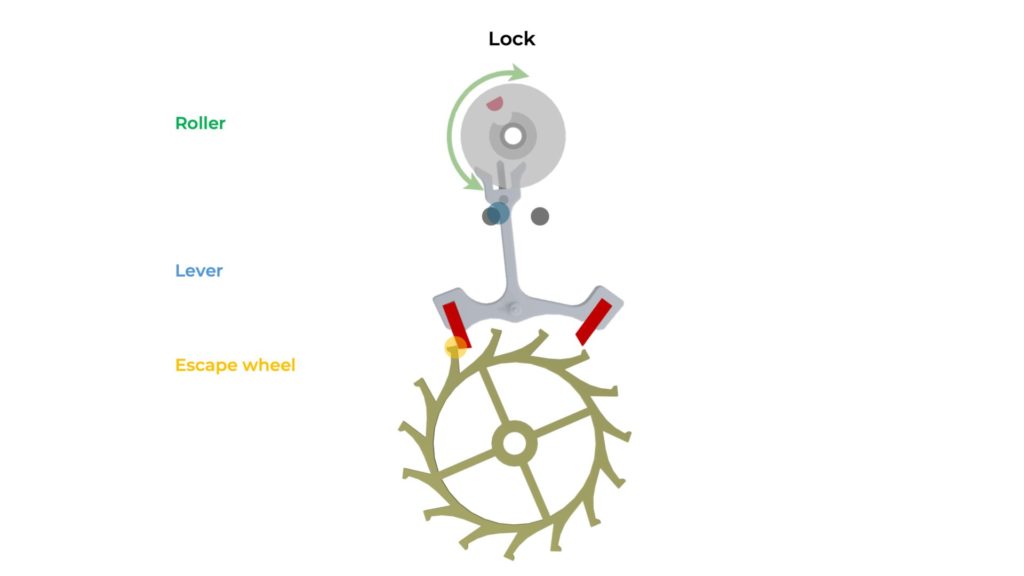
-
Double Roller: Completes the additional arc of oscillation, ascending and descending, with the balance wheel to which it is friction-fitted.
-
Lever: Rests against one of the banking pins, remaining in a stable position.
-
Escape Wheel: Is locked. One of its teeth rests against the locking plane of one of the pallets, effectively halting its motion.
Unlocking Phase
In this phase, the going train slightly recoils in preparation for the impulse.
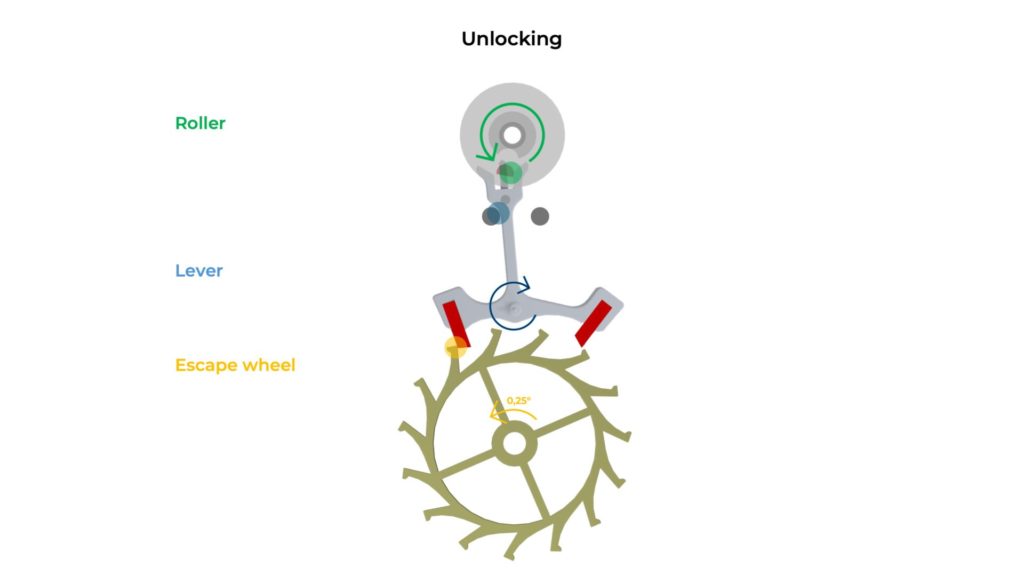
-
Double Roller: At the end of its descending additional arc, the impulse pin makes contact with the fork horn of the lever, triggering the unlocking.
-
Lever: The lever pivots slightly. The locking plane of the pallet disengages from the impulse plane of the escape wheel tooth.
-
Escape Wheel: Driven by the motion of the pallet, the escape wheel momentarily recoils. This slight reverse movement is called geometric recoil, typically around 0.25°. Carried by its inertia, the tooth continues to rotate forward very slightly (approx. 0.004°) before the equilibrium of forces brings it back to its normal direction of rotation.
Impulse Phase
This is the critical moment when the escapement transmits energy from the mainspring barrel, via the gear train, to the regulating organ — the balance and hairspring. It is the brief phase during which the entire gear train is in motion.
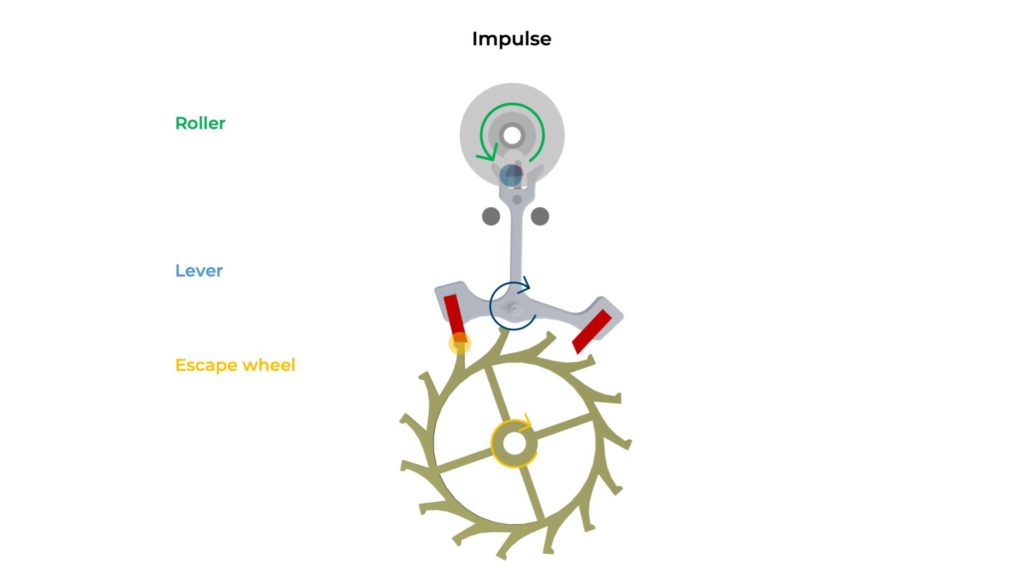
-
Double Roller: The lever’s fork pushes the impulse pin. The impulse starts just before the balance reaches its centre (dead point) and finishes just after it.
-
Lever and Escape Wheel: The impulse beck of the escape wheel tooth comes into contact with the impulse plane of the lever pallet. The impulse beak of the tooth slides along the pallet’s impulse plane, causing the lever to rotate. When the impulse beak of the tooth reaches the impulse beak of the lever, the tooth’s impulse plane then engages with the impulse beak of the pallet, continuing the motion. The impulse ends when the heel of the tooth rests on the impulse beak of the pallet.
Safety Phase
The safety angles are arc traversed by the escape wheel and the lever, serve no active function and occur immediately after the impulse phase.
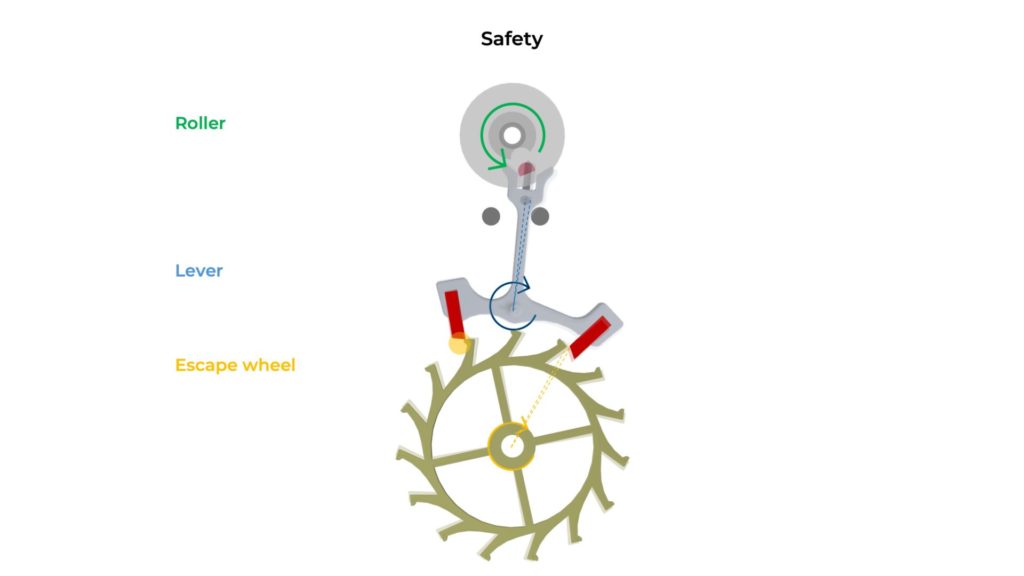
The arc traversed by the escape wheel is referred to as the drop. This is the angle through which the wheel turns between the end of the impulse (the moment the heel of a tooth leaves the impulse beak of one of the lever’s pallets) and the moment when another tooth comes into contact with the locking face of the opposite pallet.
The arc traversed by the lever is referred to as the run to the banking. This is the angle the lever turns between the moment a tooth of the escape wheel contacts the locking plane of the pallet and the moment the lever comes to rest against the banking pin.
These safety angles are designed to minimise unwanted contact and friction between components of the escapement caused by axial or radial play in the mechanism.

